A tour through Jeju’s UNESCO World Heritage Sites
A GLEAMING seashell from the beach of Mt. Seong in Jeju Island sits on top of my desk. The seashell reminds me of the natural wonders that can be found within only a short one-hour plane ride away. Jeju island encompasses unparalleled sights; its volcanic landscapes were designated as a UNESCO World Heritage site back in 2007 as they bear testimony to the history of our planet.
Mt. Seong Ilchul Peak
After arriving at Jeju Airport, I took an hour taxi ride to the Mt. Seong Ilchul peak. Also known as “the sunrise peak,” the mountain is found east of Jeju Island and was added to the World Heritage List due to its outstanding landscape and geological value. The 5,000-year-old volcanic tuff cone[1] resembles a coastal fortress guarding the island. The perfect bowl-shaped tuff is a rare occurrence in nature, and I readied for what seemed an easy little hike.
I started to make my way up, naively unprepared. While the tuff is only 180 m above sea level, the trail was steep and had numerous switchbacks. Though the hike was grueling, the view from the summit was worth it: In front was the nature-conquered crater, and behind me, the sea and the town scattered below. The world sees the site as priceless, as Mt. Seong is “triple crowned,” which means it secured its place as a Biosphere Reserve, a World Natural Heritage Site, and a Global Geopark. Walking back from the summit I took a slight detour and took stairs further down that lead to a charming little coast.
The “Umugae coast” is right beside the tuff and turned out to be my favorite spot of that day’s adventures. Carved at the foot of the hill, the site is a small beach with black sand and slippery rocks. Mt. Seong seemed to be protecting the beach from behind, giving the coast a calm and refreshing feel, as waves crashed ashore. Whether you are attracted by its volcanic history or the stunning scenery, the Mt. Seong Ilchul peak is not a sight to miss.
Entrance fee: ₩5,000
Opening times October to February: 7:30-19:00, March to September: 7:00-20:00 (Closed on the first Monday of every month.)
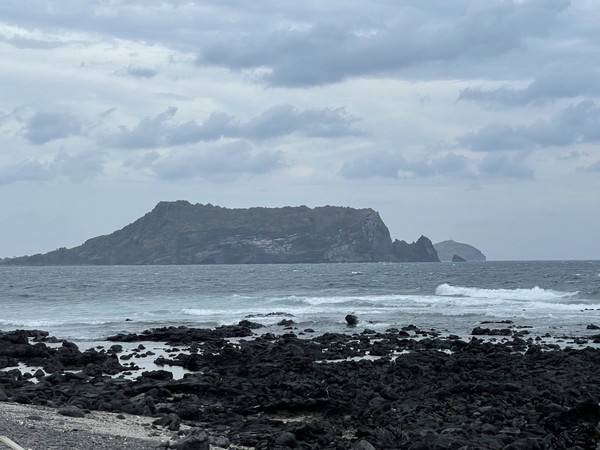
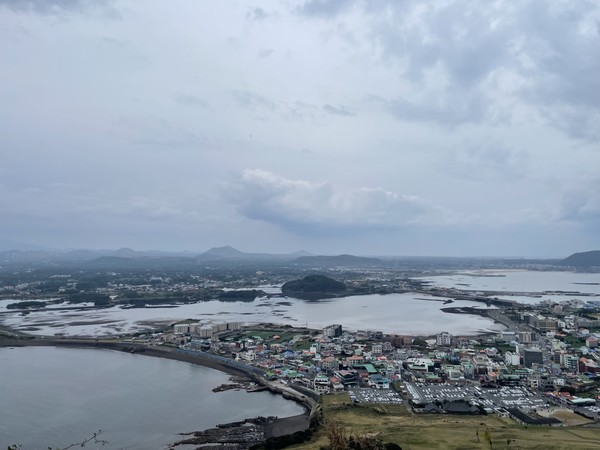
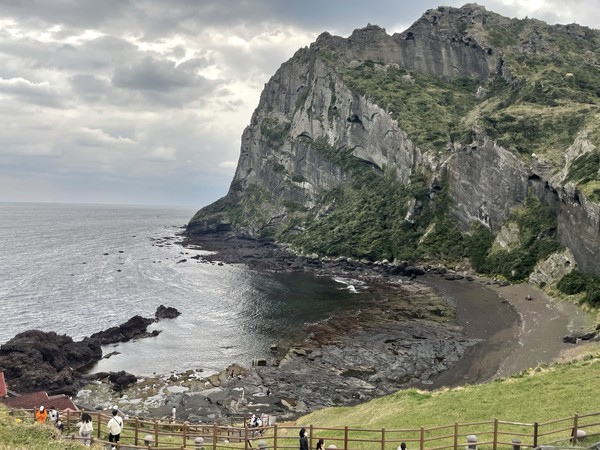
Geomunoreum
The day after visiting Mt. Seong, I took a 25-minute taxi ride to Geomunoreum, located further inland. The Geomunoreum is a 456 m mountain top, where visitors can hike around and admire its volcanic topography. The mountain is part of the remains of the volcanic activity at the origin of Jeju’s lava tube system[2], Geomunoreum has been designated part of UNESCO World Natural Heritage Sites. Before the pandemic, the site attracted on average 450 visitors per day. My hiking group gathered around a guide, who explained the routes we were going to take.
The site offers three hiking trails: a short 1.8 km mountain top course, a 5.5 km crater course which goes around the rim of the old crater with stops at a lava collapse trench[3] and a volcanic air vent[4], and a whopping 10 km trekking course, which passes by a lava gorge[5] and a vertical lava tube[6]. The courses are guided and capped at 25 visitors. The site requires reservations at least the day before the intended visitation date. After the previous hike, I could barely feel my legs, so I decided to take the shortest course. The trail cuts through a dense pine forest on an elevated wooden path. Though it was easy to follow, the short hike was more than enough to make me break a sweat. Once we reached the summit, the view surpassed my expectations. Even though the mountain is located in the inner part of the island, I could still see cities and the faraway sea. The walk back was also a sight to see—a trail surrounded by mountains, silver grass, and a picture-perfect sky.
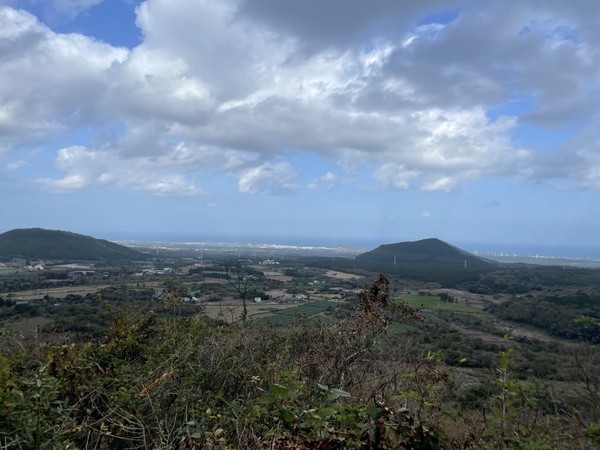
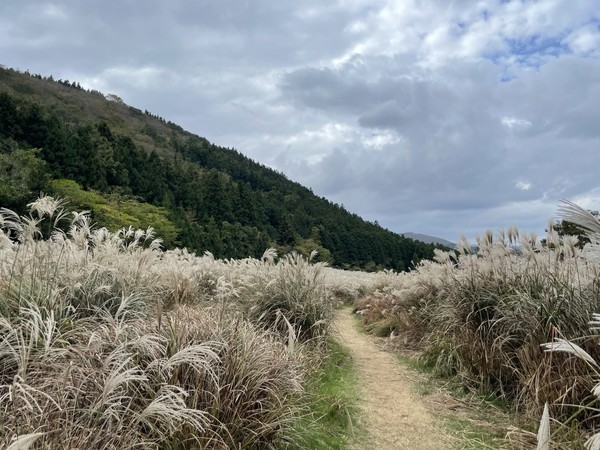
Manjang Cave Lava Tube
My final stop was the Manjang cave Lava Tube, a 25-minute taxi ride away from Geomunoreum. The lava tubes are the remnant caves of Geomunoreum volcanic activity. The whole lava tube system was designated as a UNESCO World Heritage site, and the Manjang cave is the first cave to be designated as a natural landmark in Korea. After I bought my ticket, I made my way down a few flights of stairs to descend deep inside the cave.
As I ventured further into the cave, outside light dissipated. Out of the 7.4 km of the cave, only 1 km is open for the public to explore for safety reasons. The cave was dimly lit with a few lamps, and some colored lights highlighted the lava structures overhead. The temperature dropped considerably, and water dripped, forming puddles on the cave floor. Be careful where you step, as the floor was slippery, and I nearly fell several times.
Throughout the walk, informative panels explained the origins of the visible lava structures throughout the cave, such as lava flowlines[7], lava stalactites[8], and lava rafts[9]. The well-preserved lava structures are of high academic value and granted the cave the status of Global Geopark.
Entrance fee: ₩5,000
Opening times: 9:00-18:00
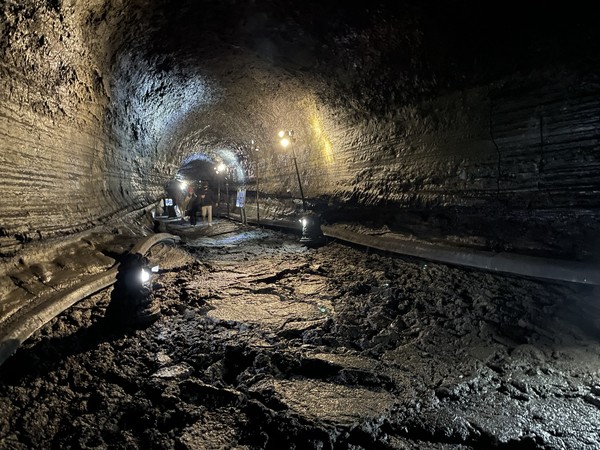
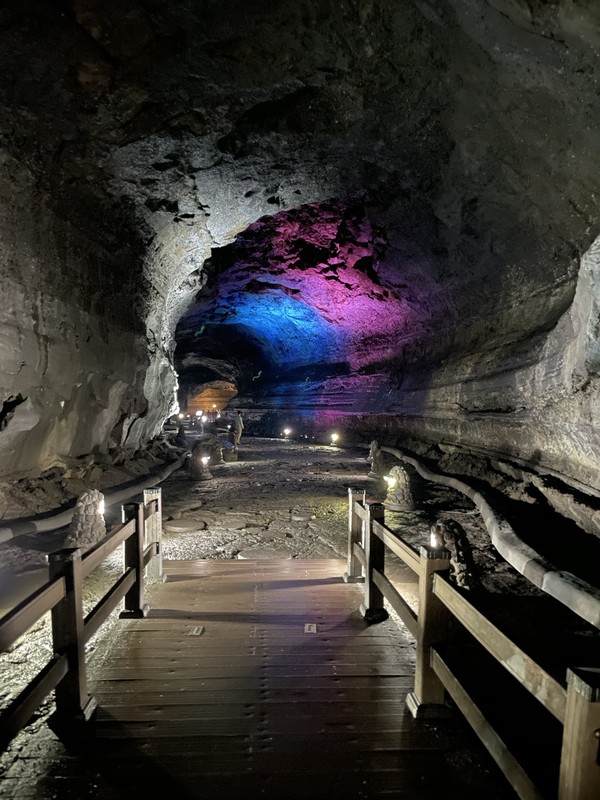
* * *
A triple-crowned island, Jeju is a unique destination to reconnect with the wonders of nature and revitalize yourself from city life. From deep caves to towering mountains, Jeju showcases the natural heritage of our Earth. The beauty of these sites is unquestionable, and the world agrees, as UNESCO has recognized them as wonders of our world.
What is a World Heritage Site?
A World Heritage Site is a place on earth designated by UNESCO for its outstanding value to humanity and ought to be protected for future generations to experience[10]. Being designated as a World Heritage Site brings pride, prestige, tourism, and funding, among other benefits. To be selected, a site must demonstrate unique attributes with geographical or historical special significance.
[1] Tuff cone: Volcanic cone formed by hydrovolcanic eruptions, usually in a bowl shaped mountain
[2] Lava tube system: Volcanic cave formed by the flow of lava from a volcanic vent
[3] Lava collapse trench: A trench created by the fall of a lava tube’s ceiling
[4] Volcanic Air vent: A gap in the earth that allows for the escape of magma and volcanic gases
[5] Lava gorge: A narrow subterranean valley created by lava
[6] Vertical lava tube: A vertical pot-shaped cave part of the lava tube system
[7] Lava flowlines: Rifts on the lava tube walls that indicate the flow level of the magma
[8] Lava stalactites: Formed as the rock ceiling melts, rock formations that pend from the ceiling
[9] Lava raft: Fallen rock fragments that were carried away floating on the lava before solidifying
[10] World Heritage Convention, UNESCO

